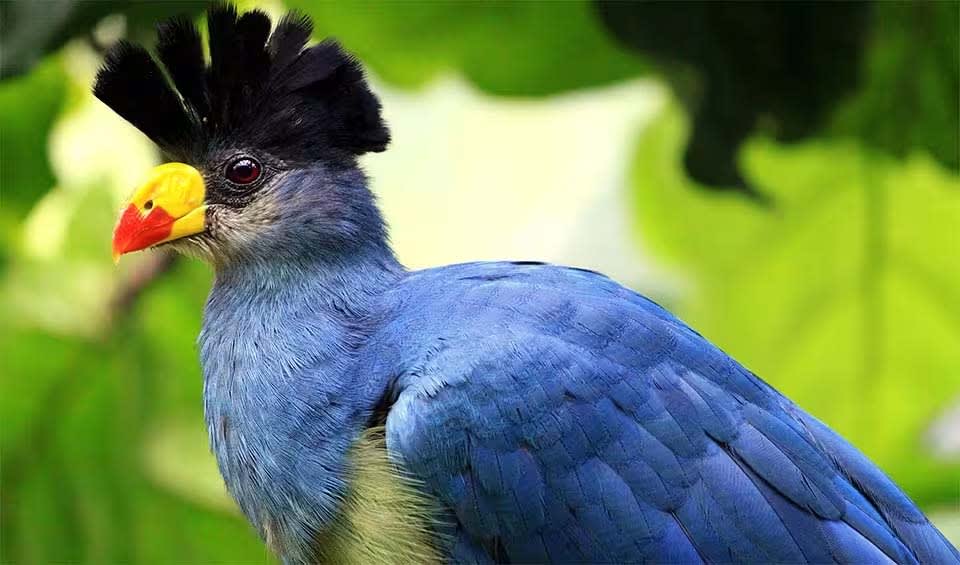Musophagidae – Turacos
Name translates to ‘banana eater’ although their diets contain many fruits and no bananas
They are commonly known as turacos, plantain-eaters, and go-away birds, exclusive to sub-Saharan Africa. This family is an exquisite example of the biodiversity within the continent, showcasing a range of species that vary widely in their habitats and behaviors but are united by their unique coloration and certain shared anatomical characteristics.
Turacos are medium to large-sized birds, with most species exhibiting a dazzling array of colors. They are predominantly arboreal, dwelling in forests and woodlands where their diet consists mainly of fruits, leaves, and flowers, hence their name “Musophagidae,” which roughly translates to “banana-eaters.” The turacos’ plumage features shades of bright reds, greens, and blues, particularly vivid due to two copper-based pigments unique to this group: turacin and turacoverdin. These pigments are water-soluble, meaning that turaco feathers can actually show a runoff of color when wet.
The crest of the turaco is another distinguishing feature, giving them a regal appearance. These crests can be raised or lowered and are used in social displays, such as when attracting a mate or signaling an alarm. Their long tails are not just for show; they assist in balance and maneuvering through their complex arboreal environment.
Turacos are exceptional climbers, using their strong legs and feet to move adeptly among the branches. Their toes are remarkable in their semi-zygodactylous arrangement; two face forward and two face backward, which can be altered at will, aiding in their remarkable climbing ability. Despite their agility in the trees, turacos are not known for their flying prowess. They can fly short distances but are generally poor fliers, preferring to hop and glide from branch to branch.
While the forest-dwelling species flaunt their vivid colors, the five savanna-dwelling species of Musophagidae, such as the go-away birds, are more subdued in their coloration, aiding camouflage within these more open environments. These birds are also known for their distinctive calls, which sound like “go away” and are often used by other animals as an alarm signal.
Genera in this family
The only living birds genus that contains a green pigment in its feathers
A fully fluffed-up crest usually means they are excited, alarmed, or showing off
A bird as big as a crow but with feathers that shimmer an unbelievable shade of blue




